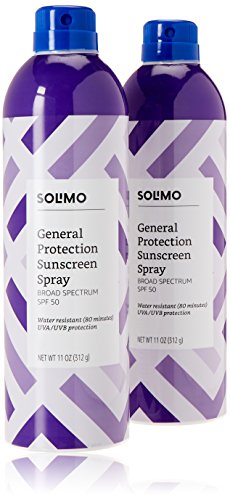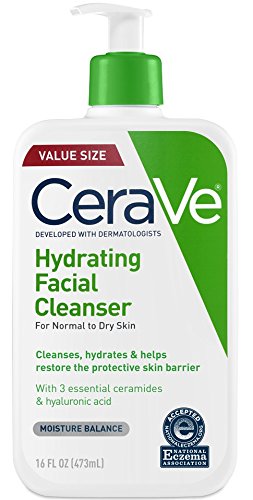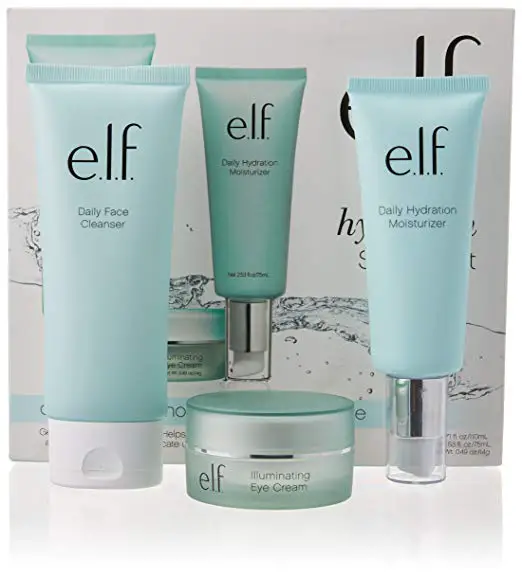The planet’s defense system is gradually being destroyed, leaving our skins at the mercy of the sun. Dangerous ultraviolet rays assault our skin daily. Given the level of radiation we receive daily from the sun; a sunscreen cannot be done without.
The fact that you need a sunscreen shouldn’t make you just pick the next available one on display. Before you splash any sunscreen on your skin, there are certain things you need to know.
This buying guide will give you a comprehensive knowledge of what a sunscreen is. And it will also enable you select a quality product.
Table of Contents
What Is a Sunscreen?
Sunscreens are skincare products designed to help guard the skin from the harmful ultraviolet (UV) rays of the sun.
It works in two ways. Some of them work by absorbing those UV rays quickly enough before your skin can some in contact with them. (We call such chemical blockers).
Others work by dispersing and reflecting those harmful UV rays away from your skin. (We call them physical blockers).
Sun-burns, aging skin, damaged collagen, discoloration and even skin cancer are the effects of exposure to the sun. All these can actually be countered if you use a sunscreen.
It is important to state early that the use of sunscreen for children is greatly discouraged. The ingredients from it can easily seep into the skin and cause damage. Instead of a sunscreen, ensure your child is kept away from the sun using a shade and protective cloth.
If you must use one for your child, ensure it is specially designed for children. Yet, we still strongly advise to avoid sunscreen usage for kids. Do NOT use a sunscreen for a child that is less than 6 months.
Types of Sunscreen
There are several forms in which a sunscreen may be found. A few are listed below:
-
Lotions and Milks
Most sunscreens in stores and on sales today are found in the form of lotions and milks.
This form doesn’t get dried easily and are quite easy to use. The downside is that they might leave a greasy feel on your face after use. Did we mention that they are also cheap? Yes, they are.
Sunscreens in this form are somewhat similar to that of lotions and milk. However, they are packaged in a tube rather than in a bottle and are much thicker.
-
Gels
This form doesn’t leave your skin greasy or sticky like the lotion or milk form. This is easily achieved because they are alcohol-based. Though, you should expect a drying result from application of this form.
This is greatly recommended for those with excess hair on their body.
-
Sprays
As you might have deduced, this form is applied by spraying. They possess similar characteristics with the gel form. The only disadvantage is you might need to use more since you’ll be spraying the content.
We do not recommend this form much because it doesn’t allow for an even application.
They are very effective for small areas that cannot be easily accessed. They cannot be easily used for larger areas. Its portability allows it to be easily carried along when going out.
-
Sticks
It is well suited for small body areas as well and doesn’t leave a greasy mess behind after use. It is also portable to be carried along.
Major Factors to Look for on the Label
-
SPF
A major factor that affects the choice of your sunscreen is the SPF. Hence it is highly important for us to have an understanding of what it really is.
SPF is an acronym for Sun Protection Factor, which is the evaluation of the extent to which a sunscreen is capable of protecting the skin from the sun’s Ultraviolet B rays.
These UVB rays are the major cause of skin-cancer, sunburn and skin reddening. The level of UVB rays we’re exposed to is dependent on the time of day, time of the year and location.
A good understanding of the SPF scale and rating will enable you know the best sunscreen out there. Just bear in mind that the higher the SPF number, the higher its protective ability. SPF Scale
Look at the SPF scale below:
93 percent UVB rays will be blocked by a SPF 15
97 percent UVB rays will be blocked by a SPF 30
98 percent UVB rays will be blocked by a SPF 50
99 percent UVB rays will be blocked by a SPF 100
SPF Recommendation
Any sunscreen below SPF 15 will only protect you against sunburn and NOT skin aging or skin cancer.
Skincare professionals recommend that for any form of exposure to sun, at least a SPF 15 is required.
However, do NOT think that a 15 SPF will work effectively for all cases. Rather it is more or less the minimum standard required.
A higher SPF level above 15 is needed for special cases like fairness of skin, history of skin cancer in family and even lupus. To this effect, one with SPF 30 should be applied.
It is recommended that a sunscreen with SPF 50 be used for those with burns or photo-damage.
Having a sunscreen with SPF 100 may sound cool, but it isn’t of much greater benefit than a SPF 50. The percentage difference is so low to be of major significance.
Suffice to say, that no sunscreen can actually offer you 100% protection against UVB rays. So do NOT be deceived by any product that promises such; they are SCAMS.
-
Broad Spectrum
So far we’ve only mentioned UVB rays as a harmful radiation that affects the skin. However, UVB rays aren’t the only type of UV ray being emitted by the sun. You also need to be wary of Ultraviolet A rays (UVA).
UVA rays are responsible for causing the skin to age early and skin cancer as well.
Tanning of the skin is as a result of UVA rays that enter into your skin’s inner layer. Unlike UVB rays that aren’t constant, UVA rays do NOT fluctuate based on time or season.
Broad spectrum is the name given to the protection against UVA rays.
Although, when a sunscreen has broad spectrum on its label, it protects from both UVA and UVB rays.
The broad spectrum level is nearly equal to its SPF level.
If the sunscreen you intend buying does not have ‘broad spectrum” protection, do NOT buy it. Such products can only promise you protection against sunburn but NOT against aging of the skin or skin cancer.
-
Water Resistant
When you see ‘water-resistant’ on any product, it doesn’t make it waterproof.
A sunscreen that has water-resistant labeled on it indicates that the product is capable of functioning despite sweat or water. This doesn’t mean it will remain on you without fail while swimming in the pool.
Most water-resistant sunscreen lasts either for about 40 minutes or 80 minutes. This must be expressly stated on the label.
Your sunscreen isn’t towel-resistant either. So whenever you use a towel, you’re to reapply a sunscreen.
More Factors to Consider When Getting your Sunscreen
When getting your sunscreen, ensure the product you’re getting is fulfilling a good part if of what’s stated below.
-
Check for date of expiration
Although most sunscreens are designed to last for three years; however always find out the date of expiration.
-
Ensure it’s suitable for your skin
Use a lightweight sunscreen for oily skin, and thicker sunscreen for a dry skin. Sunscreen that is appropriate based on the weather for should be used a combination skin. Then gentle sunscreen free of allergic substances for a sensitive skin.
-
Anti-aging ingredients
If you’ve begun to develop wrinkles and fine lines, then your sunscreen should contain properties that will help combat that.
-
Precaution for pregnant women
When choosing a sunscreen, it is advisable to pick one that doesn’t contain retinyl palmitate or retinol palmite. These ingredients have been linked to birth defects.
Ingredients Found in Sunscreens
Let’s look at a few of the ingredients found in the sunscreens, shall we?
-
Para Amino Benzoic (PABA)
This ingredient is capable of causing allergic reaction to the skin. Apart from that, it can make the skin overly sensitive to light.
Only pick a sunscreen that have “PABA-free” stated on their labels.
-
Oxybenzone
Despite its high success rate of protecting the skin from UVB rays, a lot of controversies have risen over it.
Research personnel have discovered little quantity of oxybenzone in people’s blood sample across America. This has caused a percentage limitation of its use in sunscreen products.
What’s the verdict concerning this ingredient? Even though its effectiveness against UVB rays is nearly second to none, we’ll advise you to use this cautiously.
-
Fragrances
Fragrances are mostly irrelevant in any skincare product. They serve no particular purpose except to function as eau de cologne. Not just that, they also cause allergic reaction to the skin and a stinging sensation the eyes. Best advice is to stay away from these by all means.
-
Parabens
Parabens are preservatives used in some skincare products. The risk parabens pose to the skin has come under scrutiny from health personnel and agencies. This has made a couple of brands to exclude them in their products. So basically seek for a sunscreen with “paraben-free” on the label.
-
Titanium dioxide or zinc oxide
These ingredients are more recommended than others because they work without the allergic reactions others might cause. This makes them an excellent choice for those with sensitive skin.
They are referred to as physical blockers and a capable of giving a wide range of photo-protection. Another good thing about these ingredients is that they won’t break down upon exposure to sun like most other ingredients. These must be included in any sunscreen you intend using.
However, since they combat the UV rays intensely; they also tend to get degraded faster. This can be remedied by making your sunscreen application more often.
Guidelines on How to Apply a Sunscreen
1. Shake it before use. This will evenly cause the distribution of the ingredients that are active in it.
2. Before your exposure to the sun, it is recommended you use a sunscreen 15 minutes prior to your going out.
3. Use lavishly on every part that is exposed to the sun.
4. It needs constant reapplication, especially when they seem to come off as a result of sweat. The reapplication should be done at an interval of two hours consistently.
Do NOT believe the products that claim to be “once a day”. That is you can only use it once in a full day. Most of such products have been proven otherwise.
5. Don’t leave home without enough sunscreen.
6. Daily apply a sunscreen of SPF 15. If you’ll be staying outdoors for an extended period of time, then one that has SPF 30 should be used.
7. Ensure you apply it to all body areas that are exposed to the sun. This includes parts such as the feet, ears, hands, shoulders, backs etc. Do NOT overlook any part that will get such exposure.
8. Use of insects repellent as well as your sunscreen might affect the effectiveness of your sunscreen. The effectiveness of your sunscreen can be cut down by about a third. DEET which is found in insect repellents is responsible for this effect on one’s sunscreen.
9. Ensure you wash it off at night. You obviously do NOT need to be covered in sunscreen when the moon is up.
Tips for General Protection against UV Rays
-
Wear UPF-rated material
Apart from using a sunscreen to protect yourself from the UV rays, you could also wear UPF-rated materials. Your sunscreen won’t last you that long if you’re applying it to your entire body.
Rather, wearing a UPF-rated material will protect your skin from the harmful rays. While your sunscreen protect those exposed areas.
-
Apply sunscreen lavishly to exposed areas
Do NOT try to be conservative when using a sunscreen. You are to use it in large amounts. The body areas your UPF-rated fabric couldn’t cover; ensure your sunscreen covers them adequately.
-
Wear UV-ray protection sunglasses
The area around your eye is extremely sensitive to UV rays as well as your eyes themselves. Therefore get sunglasses that offer 100 percent protection from UV-rays. Plus it will make you look fashionable.
-
Stay in the shade as much as you can
As much as we require the sun’s rays for the sustenance of life on the planet, we are not plants. We do NOT photosynthesize; therefore we do NOT need to be under the sun for extended period of time.
So stay away from the sun as much as possible. Avoid direct contact with the sun’s rays. Always seek a shade and stay in it.
Just like the sun rises daily without fail, you should also use your sunscreen daily without fail.
Feel free to let us know your experience in the comments section.








Pingback: Anti-Aging Eye Cream: Get Back That Glow in Your Eyes
Pingback: Skin Firming Cream: You Do Not Have To Look Your Age
Pingback: Moisturizing Cream: How to Choose the Perfect One Just For You
Pingback: Sunblock Face Cream: Protects Not Just Your Face but Also Your Identity
Pingback: Skin Lotion: A Refresher on a Well-Known Product
Pingback: Skin Whitening Cream: Beyond the Basic Knowledge
Pingback: Suntan Lotion: Your guide to Getting Perfectly Tanned Skin
Pingback: Skin Glow - How to Get Glowing SKin - The Ultimate Guide
Pingback: Revlon Photoready vs Colorstay Foundations – Comprehensive Comparison
Pingback: Clinique Almost Powder vs Superpowder Foundations – Broad Comparison
Pingback: Estee Lauder vs Clinique BB Creams - Extensive Comparison
Pingback: How to Tighten Skin under Chin after Weight Loss - Detailed Look
Pingback: Foot Fungus Cream: Protect and Heal your Feet from Infections
Pingback: Acne Soap: Remove Acne with an Easy Wash Always
Pingback: Anti-Pimple Cream: Your Guide to Pimple-free Skin
Pingback: Clinique Even Better vs Superbalanced Foundations - Detailed Comparison
Pingback: Face Spray: A Beneficial Skincare Product - Skincare Products Guide